 By Ted Beyer
By Ted Beyer
There are certain days in history that pretty much anyone who was alive at the time can remember as though it was yesterday. Times of trial and triumph. Heart-wrenching times like September 11th, or the day Kennedy was shot, or the Challenger. And then there is the day that we landed on the Moon.
July 20, 1969
I remember it like it was yesterday. It was my seventh birthday and I was eating a castle-shaped birthday cake made by my cousins, Ruthie and Mary Ann.
Birthday aside, the only thing I—or any of my family—could think of were the three men in orbit around the Moon. On a tiny 9” black and white TV, we watched as Neil and Buzz descend to the surface. CBS anchor, Walter Cronkite, explained things for us from time to time.
Finally, after nearly turning blue from holding our collective breaths, we heard Neil say, “Houston, Tranquility Base here. The Eagle has landed.” Even now, 50 years later, just typing those words makes the hairs on the back of my neck stand up.
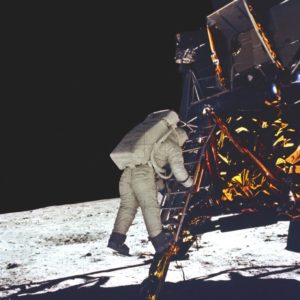
In this photograph, astronaut Aldrin takes his first step onto the surface of the Moon. Photo credit: NASA
After the landing, we finished the cake, and eventually I went to bed. (Remember, I was only 7!) Around 10:15 that night, my dad shook me awake. The astronauts were going to walk on the Moon early!
Again, we crowded around the little TV screen to watch as Neil Armstrong made his way down the ladder to the Moon’s surface. We heard his words: “That’s one small step for man, one giant leap for mankind.”
As luck would have it, a severe thunderstorm hit our neighborhood and knocked out the power while the spacemen were exploring the surface. Undaunted, we all piled into our Buick station wagon. From there, we listened to the rest of walk on the car’s radio.
I hate to admit it, but somewhere in there, I fell asleep…
That Day. Wow.
I can only imagine the hundreds of thousands of workers all over the country—and many more around the world—who looked up at the Moon that night and thought with pride, “I worked on that.” For the record, it is estimated that 400,000 people, working at more than 20,000 contractors, universities, and government agencies, had a hand in the success of Apollo 11.
I like to think that I was not alone the next night when I went outside to stare at the Moon, and imagine the footprints left behind by Neil and Buzz, and dream that perhaps one day I might be there too.
Before endeavors like this fade into obscurity, if you are younger than people about my age (and I hate to admit it, but I’m getting up there!) you should know that the world largely stopped that day. EVERYONE was watching or listening. It was the largest television audience in history at that time—530 million people were seeing the same grainy slow-scan images as I was.
The days before… and after
I had started collecting newspapers months before they launched on July 16—anything that had a story about the mission in it. I even built a three-foot tall Saturn V with the help of my cousin, Matthew.
(By the way, we’ve got what you need if you want to build your own smaller replica of the Saturn V or the Apollo 11 Lunar Module or the Apollo 11 CSM and Lunar Module combo. But you can’t borrow my cousin, Matthew.)
And of course, we all drank Tang for breakfast—and maybe another glass or two in the afternoon as well. After all, we had to be just like the astronauts!
We were not alone. The Moon missions captivated the whole world. Huge headlines flared on every newspaper (yeah, newspapers were a big deal then). I even had a small and distant connection to one of the astronauts—one of my mother’s college roommates turned out to be the sister of Michael Collins.
Michael Collins is often forgotten—he was the third astronaut who stayed in orbit around the Moon. I was once set to have lunch with him about 10 years after the landing, but sadly that never happened. If you have the opportunity and an interest in space and the men who flew to the Moon, I cannot recommend his book, Carrying The Fire, more highly.
Beyond Apollo 11
Interest in the program fell off with some of the public after Apollo 11. (Well, except for the extraordinary events of Apollo 13.) But not for me—no way! I watched every minute of coverage I could find. I looked at my maps of the Moon to pick out the landing sites. Did you know that Standard Oil—Esso in my area, and now Exxon everywhere—handed out free maps of the Moon? I had two of them!
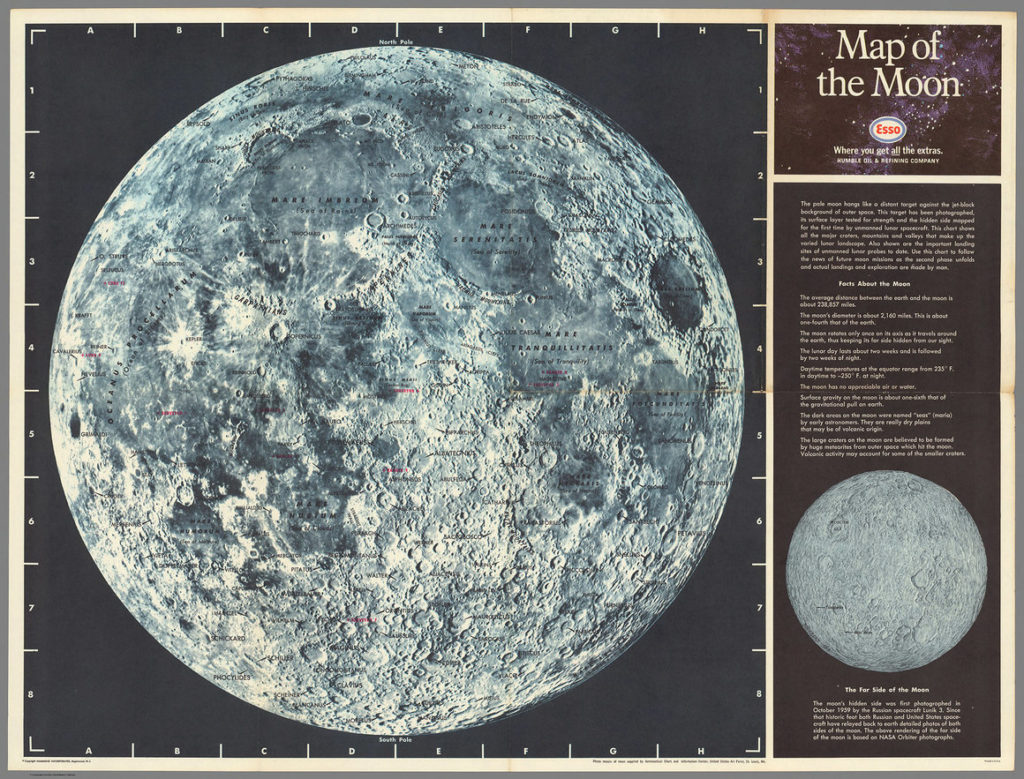
Photo credit: David Rumsey Map Collection
As the Apollo program drew to a close, I kept wondering: when are we going back, and who will that be? I wanted the Moon base that NASA drawings promised. Where was the Moon shuttle that I had seen in the movie 2001: A Space Odyssey? I eagerly anticipated all that and so much more. Heck, I was going to be an astronaut myself!
Of course, that never happened. But NASA has a new mandate to get back to the Moon in the next five years or so. We have not forgotten how to get there—we’ve just lacked the will. I have hope that the 50th anniversary will remind people of what is possible, and push them back out to the stars once again.
And now, a word from our sponsor (and no, it’s not Tang)…
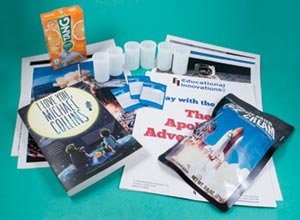 In honor of the 50th anniversary of the Apollo 11 Moon Landing, Educational Innovations has created some REALLY special kits that you won’t find anywhere else.
In honor of the 50th anniversary of the Apollo 11 Moon Landing, Educational Innovations has created some REALLY special kits that you won’t find anywhere else.
The perennial kid in me loves the Apollo 11 Adventure Kit—and not only because it contains my favorite childhood drink. It also features a packet of freeze-dried Astronaut Ice Cream, Rocket Film Canisters, and six color photos from NASA. There’s also a plentiful cross-curricular lesson plan and a young adult book, “I Love You, Michael Collins,” a heartwarming, award-winning fictional account of a girl who chooses the only astronaut who stayed with the Apollo 11 ship as her pen pal during the summer of 1969.
Then there’s our exclusive Apollo 11 Commemorative Set. It’s a truly unique collection of photos, do-it-yourself models, and a ceramic NASA Mug worthy of any aspiring astronaut’s morning coffee!


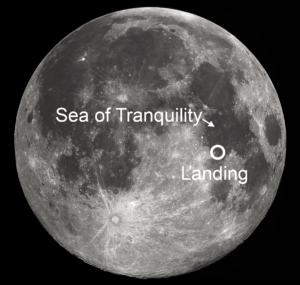

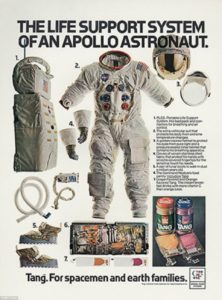
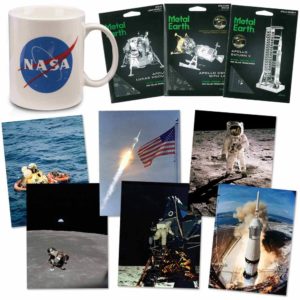
Excellent blog, Ted! Very well written and it is great to share your joy that is still vibrant when you talk about it.
Margaret
Thanks Margaret — it was a special time for all of us, but somehow extra special for me to this very day.